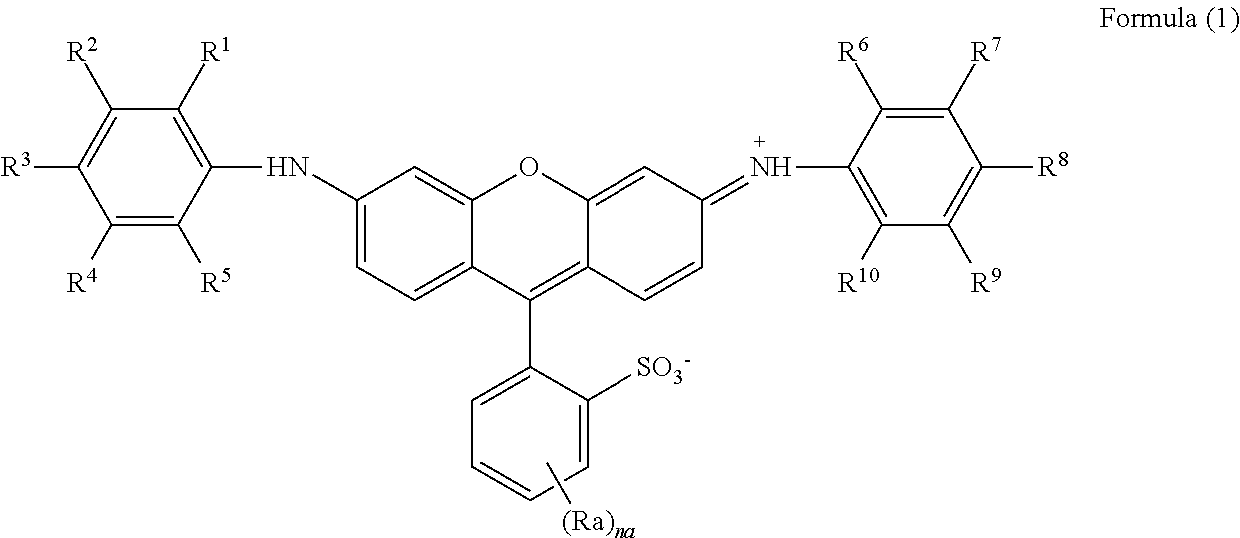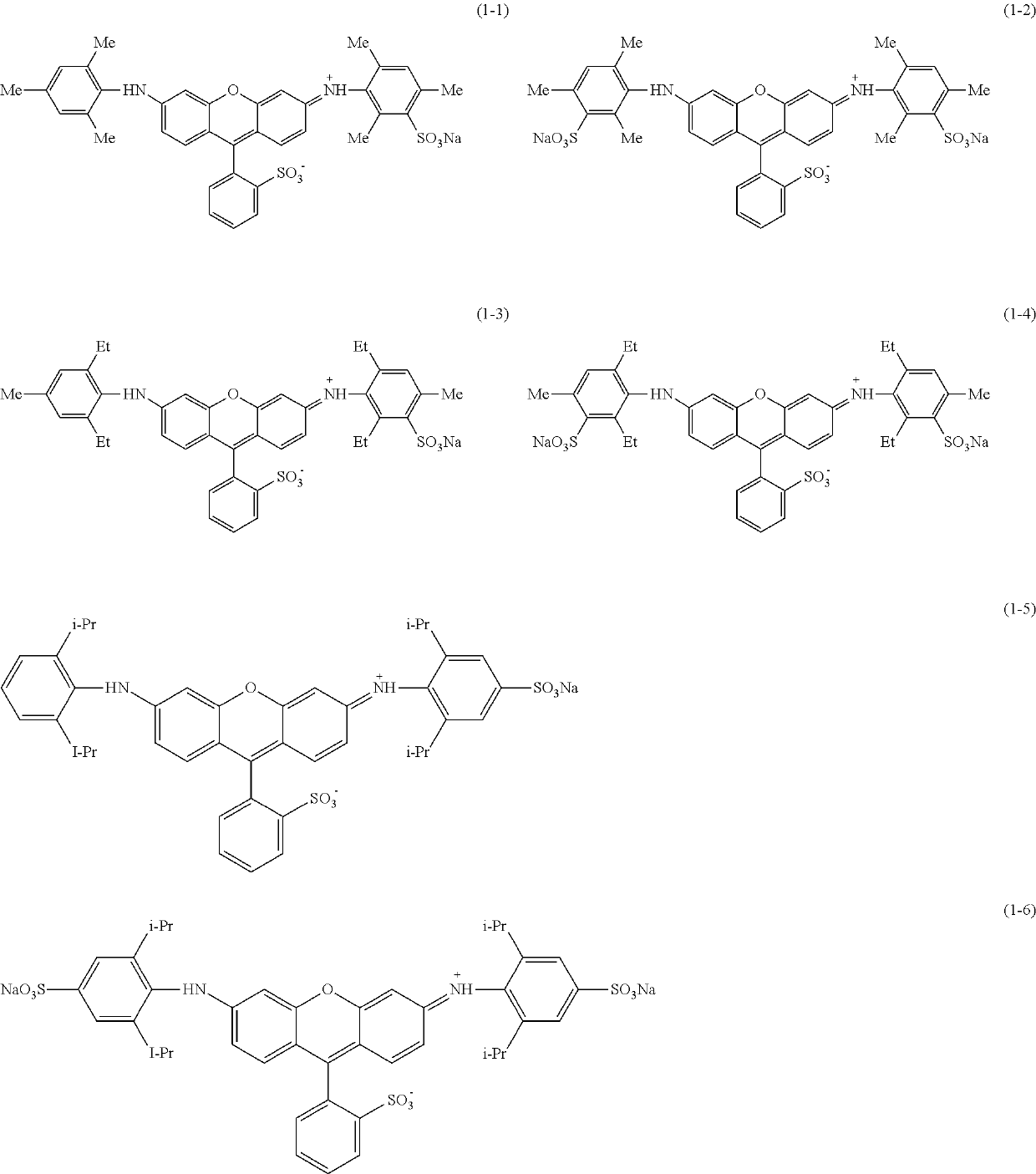Coloring composition for textile printing, textile printing method, ink for ink jet textile printing, and dyed fabric
a technology for textile printing and dyeing compositions, applied in dyeing process, inks, coatings, etc., can solve the problems of insufficient vividness, insufficient light fastness and wet fastness of dyeing, image bleeding, etc., and achieve rapid reproduction of design images, strong reddish, and insufficient vividness
- Summary
- Abstract
- Description
- Claims
- Application Information
AI Technical Summary
Benefits of technology
Problems solved by technology
Method used
Image
Examples
examples
[0200]Hereinafter, the present invention will be described using examples, but the present invention is not limited to these examples. Unless specified otherwise, “%” and “part(s)” represent “mass %” and “part(s) by mass”.
synthesis examples
[0201][Synthesis of Exemplary Compound (1-1)]
[0202]Exemplary Compound (1-1) can be synthesized, for example, using the following scheme.
[0203]
(Synthesis of Intermediate Product (A))
[0204]74.1 g of dichloro sulfophthalein (DCSF) (content: 70%; DCSF (trade name), manufactured by Chugai kasei Co., Ltd.), 80.0 g of 2,4,6-trimethylaniline (manufactured by Tokyo Chemical Industry Co., Ltd.), and 28.6 g of zinc chloride were caused to react with each other in 320 g of sulfolane at 200° C. for 3 hours. The reaction solution was allowed to cool to 25° C. and was poured into 2 L of dilute hydrochloric acid to precipitate crystals. The precipitated crystals were separated by filtering and were washed with 1 L of dilute hydrochloric acid and 1 L of water. The obtained wet cake was dispersed in 1 L of acetonitrile and was stirred under heating at 45° C. for 30 minutes. The crystals were separated, were washed with a small amount of acetonitrile, and were dried using a fan dryer at 60° C. As a re...
PUM
| Property | Measurement | Unit |
|---|---|---|
| mol % | aaaaa | aaaaa |
| temperature | aaaaa | aaaaa |
| temperature | aaaaa | aaaaa |
Abstract
Description
Claims
Application Information
 Login to View More
Login to View More - Generate Ideas
- Intellectual Property
- Life Sciences
- Materials
- Tech Scout
- Unparalleled Data Quality
- Higher Quality Content
- 60% Fewer Hallucinations
Browse by: Latest US Patents, China's latest patents, Technical Efficacy Thesaurus, Application Domain, Technology Topic, Popular Technical Reports.
© 2025 PatSnap. All rights reserved.Legal|Privacy policy|Modern Slavery Act Transparency Statement|Sitemap|About US| Contact US: help@patsnap.com



